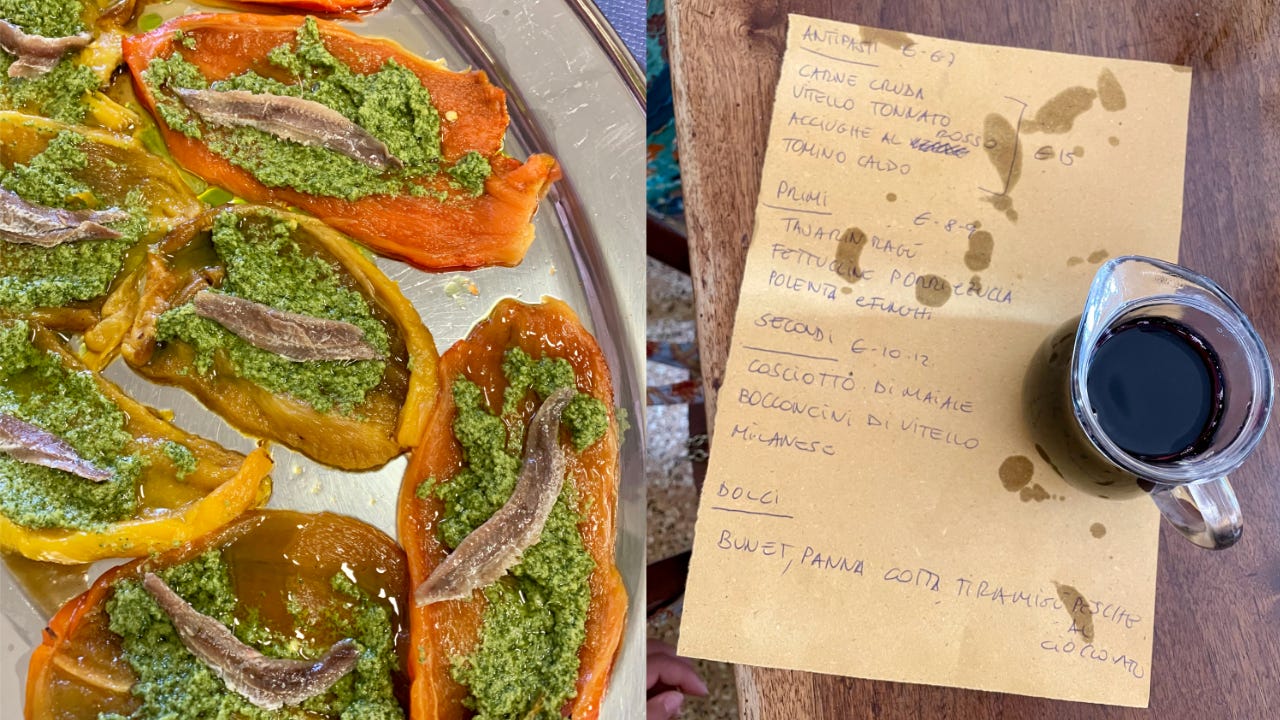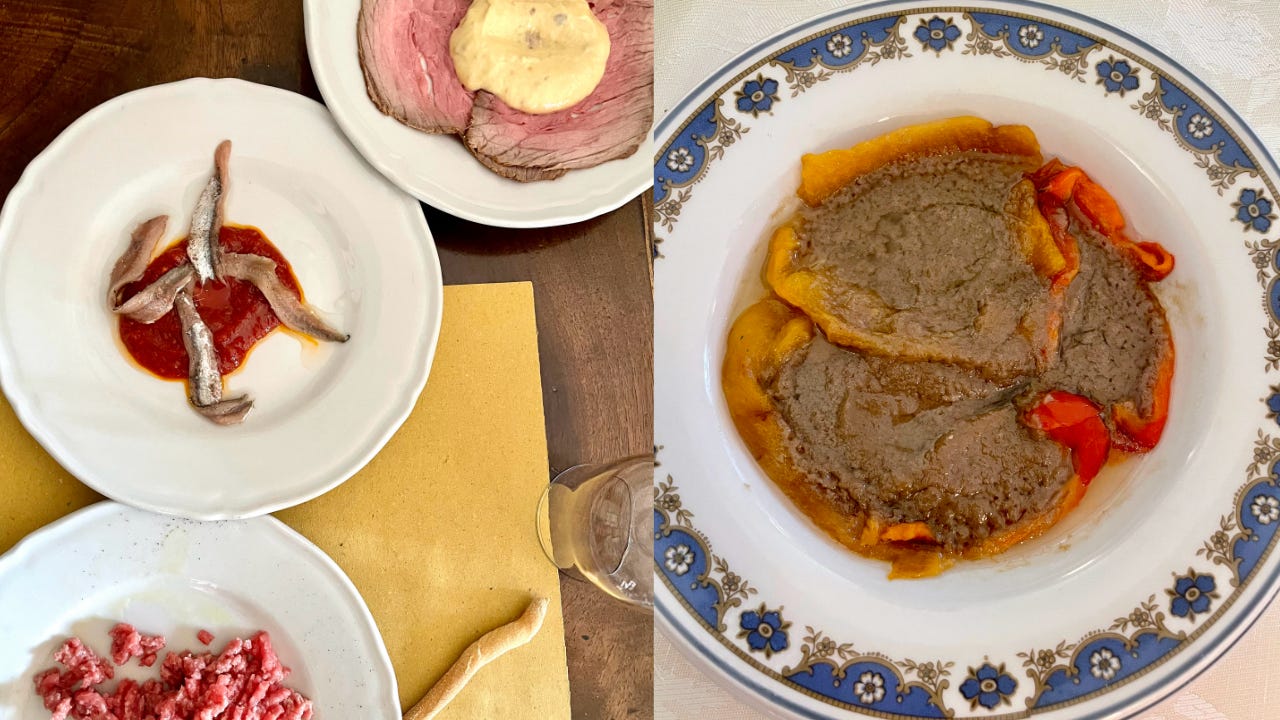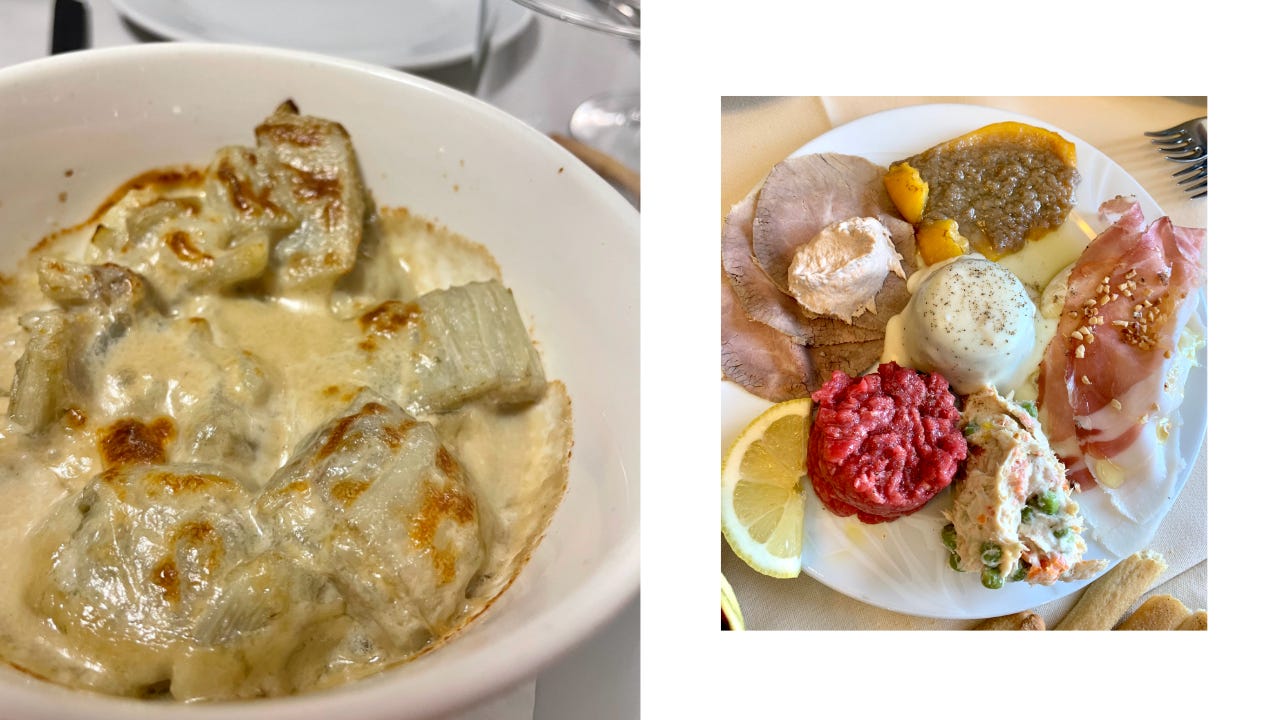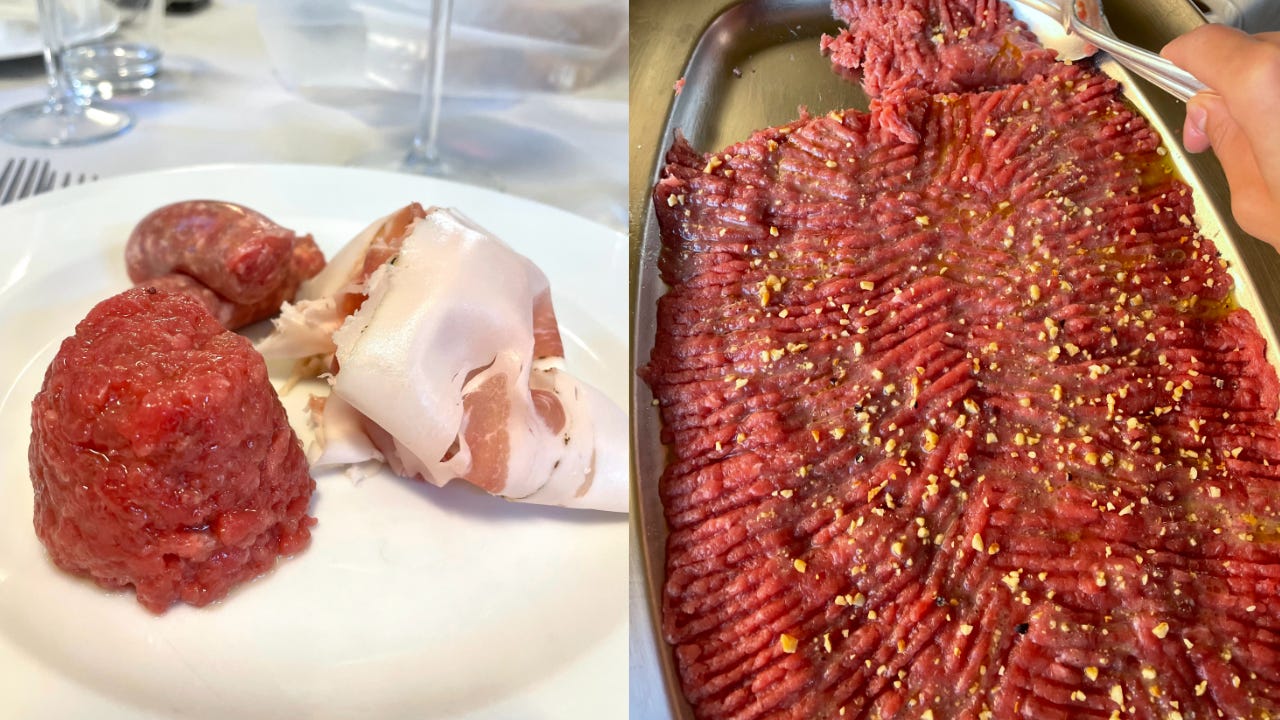Ode to Piemonte's Antipasti
Supper rarely begins without a little something to open one’s stomach
By Carlotta Panza. Originally published on Italy Segreta in March 2022.
Italy is globally renowned for possessing one of the richest cuisines in the world. Richness in biodiversity, quality of ingredients and repertoire of recipes. Yet “Italian cuisine” isn’t just one: our national gastronomic identity is composed of 20 regions, each with a radically different – yet at times also similar – collection of dishes and preparations. Each region possesses an array of well-known dishes and is known for a dozen or more prodotti di eccellenza — think bottarga from Sardinia… Yet there is a region that differentiates itself not just for its high-quality products, but for the approach to courses of a meal: Piemonte and gli antipasti, or appetisers.
Antipasti are a vital component of meals throughout the whole of Italy – supper rarely begins without a little something to open one’s stomach. In most regions, however, antipasti are small dishes and simple preparations: from boards of salame to crostini in Tuscany or cicchetti in Venice. On the other hand, Piedmontese antipasti are thought-out, often intricate dishes with a noteworthy history. Most of you are probably familiar with vitello tonnato and insalata russa but Piemonte’s antipasti are so much more than that! In fact, they carry the same importance of other primi and secondi to a meal — the reason why more than 30 documented traditional antipasti exist. Highlighting their significance is the fact that it is common to find trattorie dotted around the region which serve a vast selection of antipasti, followed by a limited choice of primi and perhaps no secondi at all.
I’m here to give you a little more insight into the fascinating, multidimensional world of antipasti piemontesi. Due to their substantial quantity, I find it best to categorize each dish by preservation method and preparation, which includes cooking techniques and ingredient combinations.
Aceto
A significant portion of Piemonte’s population throughout history has lived in rural settings, and almost every family had – and still has – an orto (vegetable garden), guaranteeing that vegetables are always abundant on the dinner table. Before fridges were widespread, in order to salvage the surplus of produce and ensure a healthy consumption of greens in the long winter months Piedmontese families adopted vinegar-based preservation methods. I present to you la giardiniera: mixed, crunchy cooked vegetables and il carpione. Vinegar is added to a gentle soffritto of onion, carrot and celery soffritto and finished with fresh aromatic herbs. Sliced courgettes, freshly caught trout filets or thin veal cutlets are breaded lightly and fried before being added to the mix, which simultaneously acts as a marinade and a method of preservation.
Bagnetti e salse
Although Piemonte’s traditional cuisine has origins in the cucina povera (peasant food) – as practically every other region in Italy – most dishes underwent a transformation phase when they were adapted to fit the House of Savoy, the King of Italy who resided in Torino. This explains why an influence of French cuisine is palpable in Piedmont’s traditional antipasti, especially when it comes to sauces. A sauce has the power of elevating a simple dish to a preparation fit for a king, literally. Beyond the well-known vitello tonnato, many antipasti piemontesi are based around a sauce: i bagnetti. Literally translated to ‘bath’, il bagnetto can be verde if made with parsley, extra virgin olive oil, bread soaked in vinegar, eggs and two ingredients which are staple elements of Piedmontese cuisine: anchovies and garlic. The almost spicy bagnet verd is served with anything from smoky roasted peppers to salty anchovies and thinly sliced lingua, beef tongue. Alternatively, the bagnet ross is made with ripe tomatoes and onions and used to season similar dishes.
The list doesn’t end here, as heavier, more substantial alternatives to the light bagnetti are the chosen sauces for the cold winter months: la fonduta and – although I risk receiving insults on behalf of piemontesi – la bagna cauda. Bagna cauda deserves an article of its own, but let me justify positioning it within the antipasti. The original dish itself is completely stand-alone and doesn’t fit into any category, yet the cumulative experience of living in Piemonte the past few years has led me to learn that it is often served as a sauce on vegetables during winter: ergo why I believe it should be included in the list of sauces. Soft, slow cooked vegetables, from cardi (cardoons) to peperoni and poached eggs are all adorned with fonduta or bagna cauda, both pairing perfectly with the seasonal vegetables. Whereas bagna cauda is made with garlic, anchovies and olive oil, fonduta has a completely different flavour base, the three key ingredients being cheese (possibly Fontina or Castelmagno), milk and cream. The result is a thick, cheesy and peppery sauce of which a spoonful feels like the most embracing hug you’ll ever receive.
Ripieni e sformati
A significant portion of Piedmont’s antipasti are made up by ripieni and sformati, two ways of upcycling and transforming leftovers into delectable new creations. Leftovers of important meals, from trays of roasted or boiled meat to trays of vegetables are minced, combined, seasoned and used as stuffing – in the case of ripieni – or mixed with eggs and milk then baked to make sformati (a savory flan). One of the most celebrated stuffed antipasto is peperoni ripieni, which consists of leftover roasted bell peppers stuffed with leftover anchovies and tonnata sauce, served with bagnet verd. Sformati on the other hand are commonly served with a generous spoonful of fonduta, to contrast the delicate flavour of the vegetables. One ripieno in particular brings me back to my childhood, a family recipe passed down for generations: i pomodori ripieni. My nonna would mix her leftover bagnet verd with canned tuna, to make the mix thicker, and then stuff emptied-out tomato halves. The perfect marriage of freshness and sapidity, given respectively from the ripe tomatoes and anchovies, tuna and bread soaked in vinegar.
Crudo
Let’s get to the raw part, because although Piemonte is full of slow cooked, roasted meats, it is the raw ones which bring perhaps the purest joy and make all inhabitants of every other region incredibly envious. Piemonte is the largest producer of Fassona, a breed of cow from which some of the best quality meat in the World is sourced, making its consumption in raw form safe and exquisite. There are few moments in life which fill one’s heart (and stomach) with as much joy as a forkful of the most tender, flavourful and light battuta al coltello. No sauces are needed, no fancy egg yolks or shavings of Parmigiano. Just great meat with a drop of olive oil and the tiniest sprinkle of salt. Nothing more is needed to create one of the most memorable dishes the region (if not the whole country) has to offer. Paper-thin cuts of veal carpaccio are another traditional antipasto, found in many different variations according to which area of Piemonte you find yourself in: from a simple olive oil and salt dressing to a creamy pesto di noci.
I can imagine you might be getting quite hungry by now, so I’ll leave you with a list of recommendations on where to eat a selection of the antipasti I mentioned in various areas of Piemonte. Next time you find yourself in the northwestern region – although you might be tempted to go for vitello tonnato, a classic – try ordering a different antipasto, it will definitely surprise you! Tasting a new dish or combination of flavours can be thrilling, and simultaneously vital to prevent the loss of Piemonte’s rich and diverse antipasti gastronomic heritage.









How transcending! I’d love to taste and experience everything you’ve shared!!!